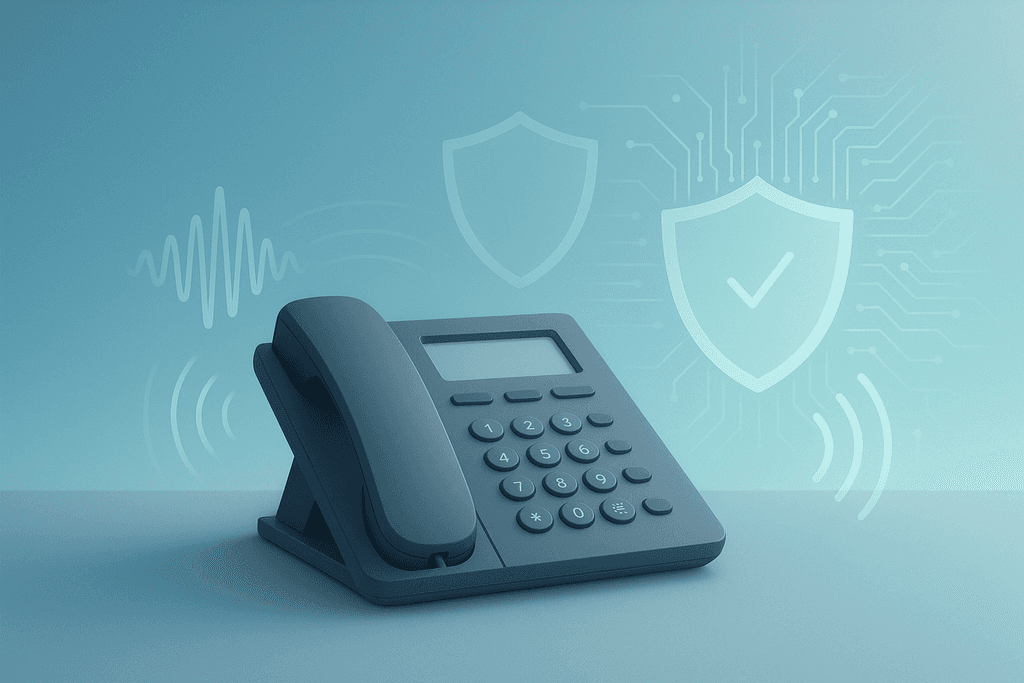Small businesses juggle sales, service, and operations — and the phone rarely stops ringing. A Twilio virtual receptionist can answer and route calls 24/7, block time‑wasting spam, and book appointments so you never miss a high‑intent lead. This guide explains how it works, what to expect, and when a turnkey solution like Small Business Chatbot is the faster path.
What is a Twilio virtual receptionist?
Think of it as a programmable, always‑on phone agent. Using Twilio’s voice APIs and tools, you can create an automated receptionist that answers calls, understands what a caller needs, routes or forwards to the right person, takes messages, and even triggers texts or calendar bookings. Modern implementations add conversational AI so it feels natural rather than “press‑1‑for‑sales.” For call trust, Twilio supports SHAKEN/STIR call authentication — useful for routing decisions and improving answer rates when you place verified outbound callbacks (Twilio documentation on SHAKEN/STIR).
Twilio can power both simple IVR (“press‑1”) and advanced conversational voice agents. Many small teams prefer a turnkey AI receptionist that sits on top of Twilio and other carriers to avoid ongoing coding and maintenance.
Why it matters now
• The FTC recorded 1.1 million robocall complaints in FY 2024 and over 253 million active numbers on the Do‑Not‑Call Registry (Federal Trade Commission, 2024; FTC press release).
• The FCC clarified in February 2024 that AI‑generated voices in robocalls are illegal without consent under the TCPA — adding new enforcement tools (Federal Communications Commission, 2024; FCC news release).
• In 2023, 28% of unknown calls were spam or fraud, and 46% of unidentified calls go unanswered, hurting legitimate businesses (Hiya State of the Call 2024; Hiya research).
Bottom line: even with stronger enforcement, spam and spoofing still waste time and erode trust. A virtual receptionist screens junk, answers real customers instantly, and documents every interaction.
Core capabilities to look for
1) Spam call filtering
Block obvious spam and deprioritize suspicious calls using allow/deny lists, SHAKEN/STIR attestation, reputation signals, and simple rules (e.g., block anonymous calls, rate‑limit repeat callers).
2) Intelligent call routing
Route by caller intent (“new booking,” “billing,” “urgent service”), business hours, and VIP lists. Escalate to a human or voicemail with transcripts and caller context.
3) Natural language handling
Let callers speak freely. The system recognizes intent, asks clarifying questions, and confirms next steps — no rigid menus.
4) Scheduling and follow‑ups
Offer open time slots and send a confirmation text or email. Log everything to your CRM so no lead slips through the cracks.
5) After‑hours coverage
Answer nights, weekends, and holidays exactly as you would during business hours — consistent tone, updated info, and clear escalation for emergencies.
6) Dashboards and transcripts
Track call volume, answer rate, booking rate, and missed‑call recovery. Review transcripts to improve scripts and train staff.
Interruptions have a cost: classic research shows interruptions increase stress and can take roughly 20–25 minutes to regain deep focus (Mark et al., CHI/ACM). Reducing spam and unnecessary transfers protects your team’s concentration (ACM study).
Setup checklist: from number to go‑live
- Pick a local number and set business hours and holidays.
- Create a simple call flow: greeting → intent capture → route/answer → confirm next step.
- Add rules: block anonymous calls, whitelist VIPs, voicemail fallback, SMS confirmations.
- Connect your calendar and CRM so bookings and notes record automatically.
- Write 6–10 short “knowledge snippets” (pricing ranges, service area, policies).
- Test with common scenarios: new lead, existing customer, wrong number, urgent issue.
- Review transcripts after week 1 and tighten prompts or routing.
Build on Twilio vs. buy turnkey
Option A: Build on Twilio (DIY/with a developer)
- Pros: Maximum flexibility; integrate deeply with internal systems; keep full control of call flows.
- What you’ll manage: Prompt design, webhook hosting, testing, monitoring, transcripts storage, regulatory compliance, and updates as models or APIs change.
- Best for: Teams with engineering resources and unique workflows.
Option B: Buy a turnkey AI receptionist (Small Business Chatbot)
- Pros: No‑code setup, pre‑built spam filtering and routing, 10+ realistic voices, text‑to‑booking, analytics, and ongoing updates handled for you.
- What you’ll manage: Business hours, FAQs, and which leads should escalate to a human.
- Best for: Most small businesses that want results this week, not next quarter.
If you have a developer and highly custom needs, building on Twilio can be great. If you want faster time‑to‑value with fewer moving parts, Small Business Chatbot is usually the better fit — and you can still connect the tools you already use via integrations.
Compliance, trust, and caller ID reputation
Three practical tips to stay compliant and build trust:
- Inbound is different from robocalling: Answering inbound calls with AI is not a robocall. For any AI‑voice outbound calls, ensure you have the right consent and disclosures in line with TCPA and related rules (see the FCC’s 2024 ruling).
- Authenticate your caller ID: Use SHAKEN/STIR so carriers can verify your identity on outbound callbacks; many businesses see better answer rates when calls are properly attested (Twilio SHAKEN/STIR).
- Keep records: Save consent logs, scripts, and call detail records. The FTC expanded protections for businesses in 2024 and updated recordkeeping expectations (FTC update).
Measuring ROI and what “good” looks like
Track these simple metrics from day one:
- Answer coverage: % of calls answered after hours and during peak times.
- Spam filtered: % of calls blocked or flagged as low‑priority.
- Booking rate: % of new‑lead calls that become confirmed appointments.
- Time saved: minutes you or your staff used to spend on screening and scheduling.
Monthly ROI ≈ (New bookings × Avg. profit per job) + (Hours saved × Hourly value) − (Software + telecom).
For many small teams, a virtual receptionist pays for itself if it recovers 1–2 extra jobs per month or saves ~3–5 hours of admin time each week.
Frequently asked questions for Twilio virtual receptionists
1) What exactly does a Twilio virtual receptionist do?
It answers your business line, understands what the caller needs, routes or forwards the call, takes messages, books appointments, and sends confirmations — all automatically. With conversational AI, it sounds natural and can handle follow‑up questions.
2) Can it block spam and spoofed calls?
Yes. You can combine allow/deny lists, caller reputation checks, and SHAKEN/STIR signals to filter suspicious traffic. Many small businesses set strict rules after hours and looser rules during business hours.
3) Is using AI to answer calls legal?
Answering inbound calls with AI is generally allowed. If you place outbound calls using an artificial or prerecorded voice, you must follow TCPA rules and obtain the required consent. In 2024, the FCC clarified that AI‑generated voices in robocalls are illegal without consent.
4) How does it integrate with our tools?
Connect your calendar to offer live availability and your CRM to log contacts, notes, and transcripts. If you want a no‑code path, Small Business Chatbot integrations cover popular calendars, forms, and CRMs.
5) How fast can we launch?
Most teams go live in a day or two: pick a number, write your greeting and answers to common questions, connect your calendar/CRM, and test. Turnkey options can be ready in minutes.
6) What does it cost?
Costs include the receptionist software and per‑minute telecom usage. DIY builds may add developer time and hosting. Turnkey options bundle most of this so your monthly bill is easier to predict.
Wrap‑up
A Twilio virtual receptionist helps small businesses capture every opportunity while shielding your team from spam and after‑hours interruptions. If you want results fast — without managing prompts, webhooks, and monitoring — Small Business Chatbot delivers an AI receptionist that’s simple to launch and easy to trust.



